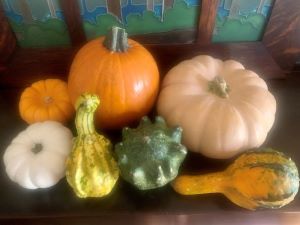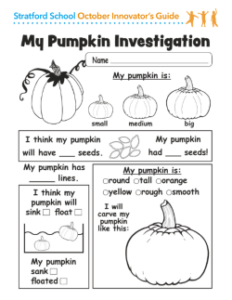- View All
- Topics
- Search
Topics
- 25th Anniversary
- Alumni
- Book Recommendations
- Child Tax Credit
- Coding
- College Admissions
- College Counseling
- Community
- Cultural Learning
- Curriculum
- Distance Learning
- Earth Day
- Engineering
- Fundraising
- Giving
- graduates
- High School
- International Women's Day
- Mandarin Bilingual Preschool
- Mandarin Language Programs
- Mindful Parenting
- Mindfulness
- National Women's History Month
- Parenting
- Parenting Support
- Poetry
- Potty Training
- Preparing for College
- Preparing for Preschool
- Reading
- STEAM
- STEM
- Student Awards
- Student Spotlight
- Teacher
- Teacher Awards
Blog Archive
- 2025 (2)
-
2024 (6)
- December (1)
- May (1)
-
March (3)
- Stratford Preparatory Blackford Middle and High School Students Recognized at Multiple Competitions and Events in March
- Stratford Fremont and Pleasanton Middle School Students Bring Home 46 Science Fair Awards at the Alameda Science and Engineering Fair!
- Stratford Mandarin Language Students Win Multiple National Chinese Culture Competitions!
- January (1)
-
2023 (5)
- September (1)
- June (1)
- April (1)
- February (2)
-
2022 (11)
- November (1)
- August (1)
- July (1)
- June (1)
- May (1)
- March (2)
- February (3)
- January (1)
-
2021 (22)
- December (2)
- November (1)
- October (2)
- September (1)
- August (2)
- July (2)
- June (3)
- May (1)
- April (3)
-
March (4)
- What Families Need to Know About Child Care Benefits in the “American Rescue Plan Act”
- Inside Out: Fostering Emotional Intelligence (EI) in your Child
- Celebrating Women’s Contributions to History One Book at a Time
- Stratford School Congratulates Our 2021 Future City Engineering Competition Participants and Winners!
- February (1)
-
2020 (9)
- December (1)
- September (1)
- August (1)
- May (1)
- April (3)
- March (2)


Pumpkin Science
Exploring the Science of a Pumpkin
It’s Fall and that means it’s pumpkin season! It’s that time of year when we are surrounded by all things pumpkin. We eat them, drink them, carve them, and decorate with them. Many of us look forward to the abundance of pumpkin spiced options — employing those lattes, cookies, breads, pie, and delicious smelling candles to help us get into that cozy feeling of the season.
But there truly is more to a pumpkin than meets the pie. At Stratford, our young students are immersed in engaging science experiments centered all around pumpkins because pumpkins just so happen to be the perfect vegetable to get children excited about the wonders of science and nature. So this year, go out and get your happiness-inducing orange pumpkins and whimsical looking gourds, and prepare to explore the fascinating science of a pumpkin with your child.
Shopping for Pumpkins or the one that has a personality all its own. Take your child with you to the pumpkin patch or the store to pick out their favorite pumpkins and gourds. If you have options, select a colorful variety of shapes and sizes. Get a big one, a little one, and liven it up with some gourds of varying colors and textures.
or the one that has a personality all its own. Take your child with you to the pumpkin patch or the store to pick out their favorite pumpkins and gourds. If you have options, select a colorful variety of shapes and sizes. Get a big one, a little one, and liven it up with some gourds of varying colors and textures.
We all love to look for the “perfect” pumpkin whether that means round and robust, tall and cylindrical,
Exploring Your Pumpkins

Once you get your pumpkin haul home, lay out your pumpkins on a table and have your child get out their lab coat (an old t-shirt or apron will do), measuring tape, and magnifying glass. It’s time to start our science exploration. Click here to download our Pumpkin Investigation printout.
Starting with a standard looking pumpkin, let’s talk about the differences that we can see on the outside first.
Looking at all of these details and answering all of these questions is called “scientific observation” and it is one of the primary ways that scientists research their subject. Your child is now an official Squash Scientist.
What’s Inside?
Next, let’s pick one of our larger pumpkins and have a parent cut it open so our Squash Scientist can see all of the amazing things that are inside of the pumpkin. There’s a whole other world to observe inside. Have your child get their hands in there and feel the pulp and seeds of the pumpkin. Talk about what that feels like. Does the inside of the pumpkin feel like the outside? How is it different or similar?
Once your child has gotten a good sense of what the pumpkin feels like inside, you can properly identify the anatomy of a pumpkin together. Have your child draw their pumpkin, color it, and label it.
Identify the following parts of a pumpkin:
The Math Inside
When you are done with the identification process, it’s time to count the seeds! Have your child remove and count all the pumpkin seeds and put those aside. Don’t forget to have them write down their findings. Later, you can roast your pumpkin seeds for a tasty snack or dry them and have your child create a pumpkin seed shaker using a recycled plastic water bottle or can.
The Life Cycle of a Pumpkin
If you have a garden or space to plant, be sure to save a few seeds to try growing your own pumpkin later. Speaking of growing a pumpkin, let’s take a good look at a pumpkin seed and talk about the life cycle of a pumpkin. What does it take to turn that little seed into a fully grown pumpkin? Once you add the essential elements of light, water, and nutrient rich soil, the seed’s potential is unlocked.
Wanting More Pumpkin Science?
Talk about the science of cooking the pumpkin. Make some pumpkin soup or pie! Observe what happens when an adult heats up the fibrous strands in a pan? What texture is the soup or pie after it is finished cooking or baking? And most importantly, what does it taste like?
Make some Pumpkin Playdough for more sensory play. Download our recipe here.
Looking For Something More Explosive?
Create a pumpkin volcano with your child using warm water, baking soda, dish soap and vinegar. You can find plenty of fun tutorials on Google and YouTube.
For older children who are ready to move on and learn all about the concept of xylem and phloem and how farmers grow those giant pumpkins, click here for an interesting read.